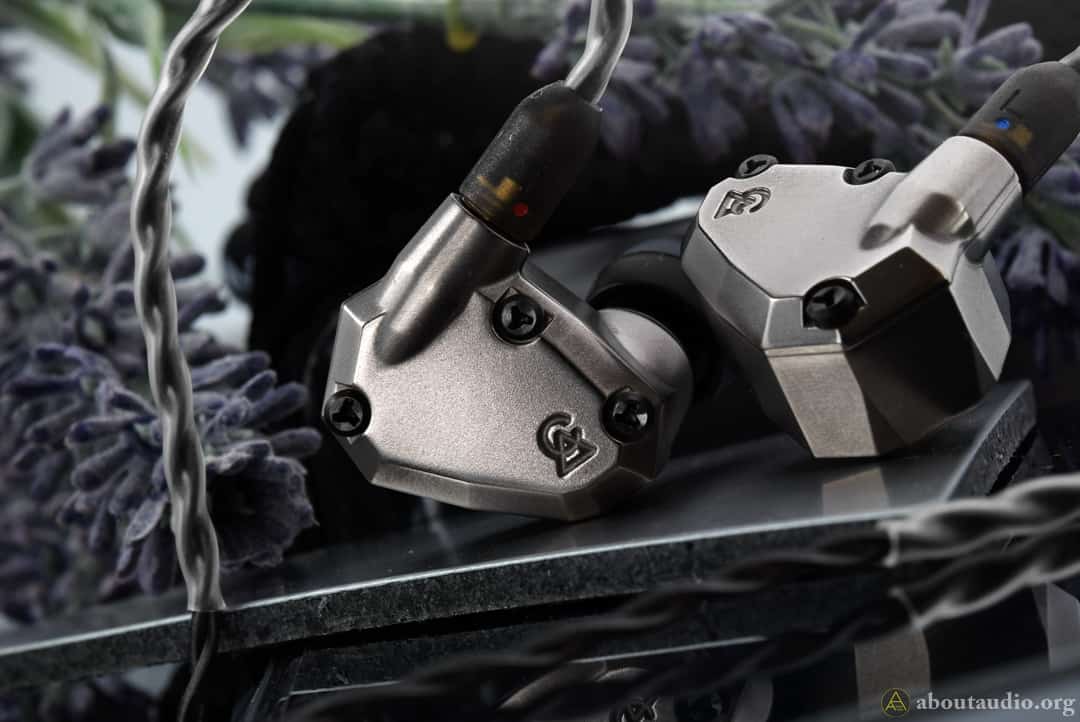 Campfire Audio Ara Review: Succeed to the throne
Campfire Audio Ara Review: Succeed to the throne
The popular brand from the portable audio industry, Campfire Audio, has come up with a new stream of products – Ara, Andromeda 2020, and Solaris 2020. The Andromeda was not only the flagship model from their full-BA lineup but also CA’s most popular product of all times, keeping its flagship title for a long period of time while other their other lineups were featured with the new successors – such as Atlas or Solaris. A rumor has been lingering upon us that CA is engineering a 7BA IEM since several years ago which turned out to be true as their announcement of a special limited edition named Andromeda Gold. Finally, after a year or so, CA announced the official, new flagship from their full-BA lineup, the Ara. Let us now take a look and see how this performs, sounds, and compares to its competitors.

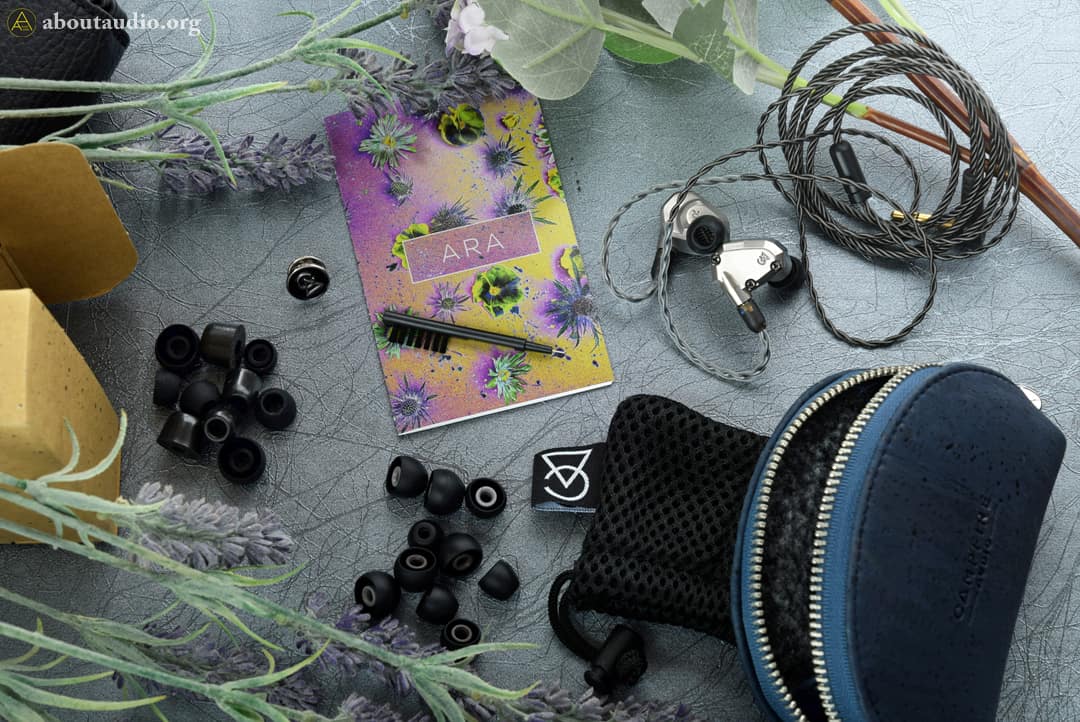 Packaging
Packaging
Campfire Audio finally went through some revamp with their packaging and I am happy about it. There are lots that do not pay much attention (or not at all), which is very reasonable. But I believe better packaging and boxing do matter when talking about premium IEMs. The size of the new packaging still goes for a reasonably small box but roughly twice the bigger than the old ones. Once you remove the CA sticker on the rear of the box, the outer packaging would unfold and reveal the inner box which includes all the belongings. I very much enjoy this new packaging as they are beautifully designed inside out and gives a feeling as if you are unboxing a present. This phase of lineups has a flower theme to it as it is apparent to the box design.
Other than the earpieces, it includes 1 set of 3.5mm stock cable, 1 leather case, 3 pairs of earpiece pouch, 5 pairs of Final Audio eartips, 3 pairs of CA eartips, 3 pairs of CA foam tips, 1 CA Lapel pin, and a cleaning tool. CA used to provide only 1 pair of earpiece pouch before, but it seems like they have realized the demand for it and started to throw in an extra 2 pairs – which I appreciate a lot. The lather case is also newly designed to have the same color as the earpiece. The size also got appropriately larger with a wider opening, now making it more convenient when storing the IEMs with thicker cables. It is also worth mentioning that the case material has now changed to sustainably harvested cork which is economically friendly and even durable than leather. The size increase also happened to the earpiece pouches as well, making it easier and smoother to store the earpieces.
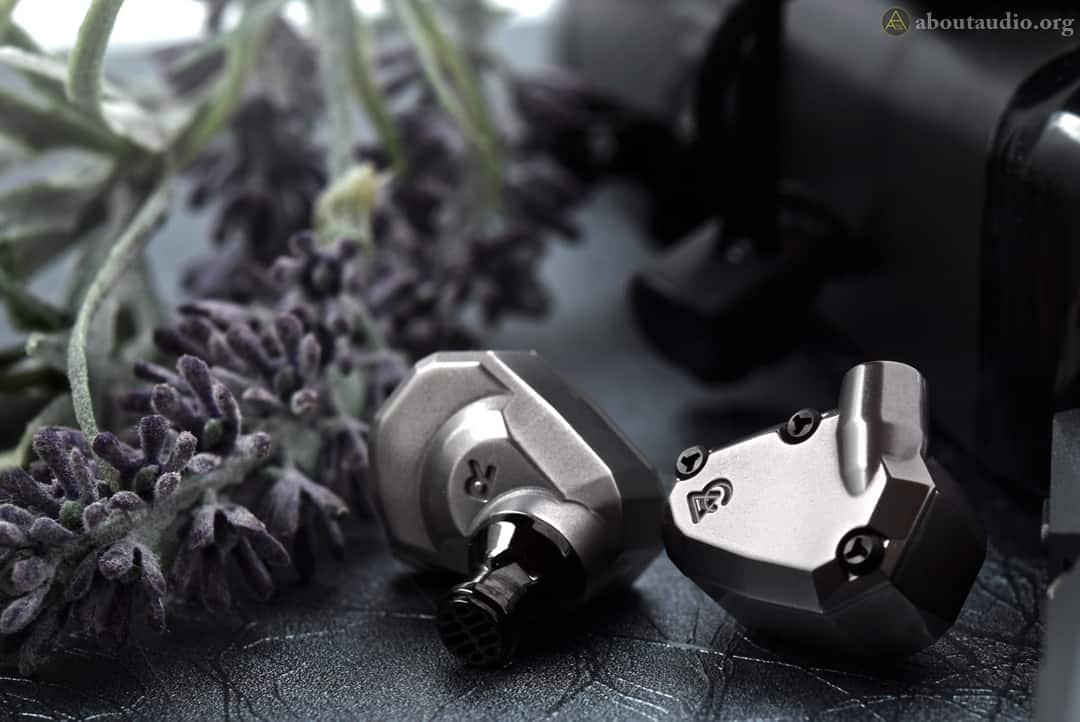 Earpieces
Earpieces
Ara houses 7 balanced armature drivers per side, comprised of four lows, one mids, and two highs that are topped with +T.A.E.C. chambers that are once again advanced from their original chamber structure. Not only Ara but all three new products went through changes where they no longer use any crossovers or passive electronic components for the internals – which CA refers to as the Solid-Body chamber design. Each driver is controlled and tuned based on acoustic housings installed with the driver in order to produce a more natural, accurate sound.
Campfire Audio also applied Ara with a housing material that they have not used before which is titanium. With the same design and form factors as IO or Polaris II, Ara’s cavity uses a CNC machined, grade 2 titanium with the surfaces kept raw. Of course, the edges do not feel sharp at all as they are polished smooth and round. Since the surface is not coated with extra layers, it actually feels smoother and more comfortable to the touch than other Campfire IEMs. Selecting titanium as the material sure made CA’s steampunk design to look even cooler.
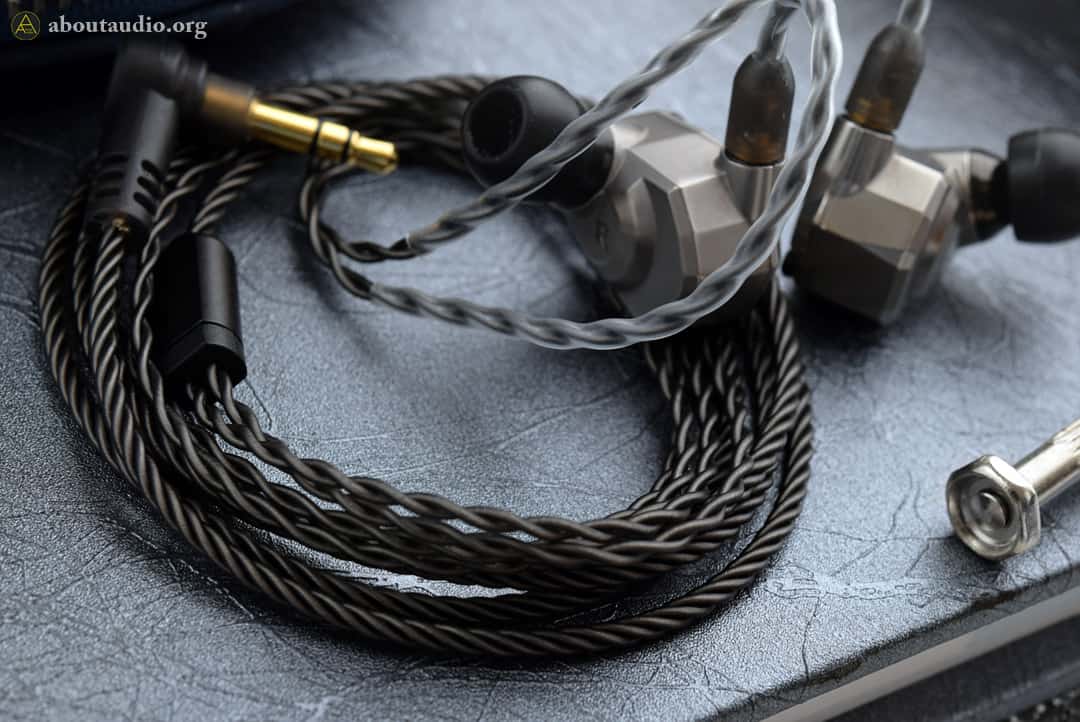 Cable
Cable
The cable went through some changes too. First the shielding. The previous silver-plated Litz cable had a transparent silver color which looked good, yet vulnerable to discoloration and stains. The new version has a smoky grey jacket that solves such problems as well as being even softer. Metal memory wires are gone too and replaced with a simple ear hook design.
I am glad that they have made this change as the metal rods used to make the earguides feel a bit odd. Super Smoky Litz is made of thick silver-plated copper Litz wires, braided to have 4 cores. The cable is terminated as MMCX-3.5mm, just as usual. It would have been better to see some extra functionalities or accessories regarding the cable termination as an IEM in this level of price would have no small amount of needs for balanced outputs. I wonder if CA will have plans for applying changeable plugs later on. Perhaps the future will tell.
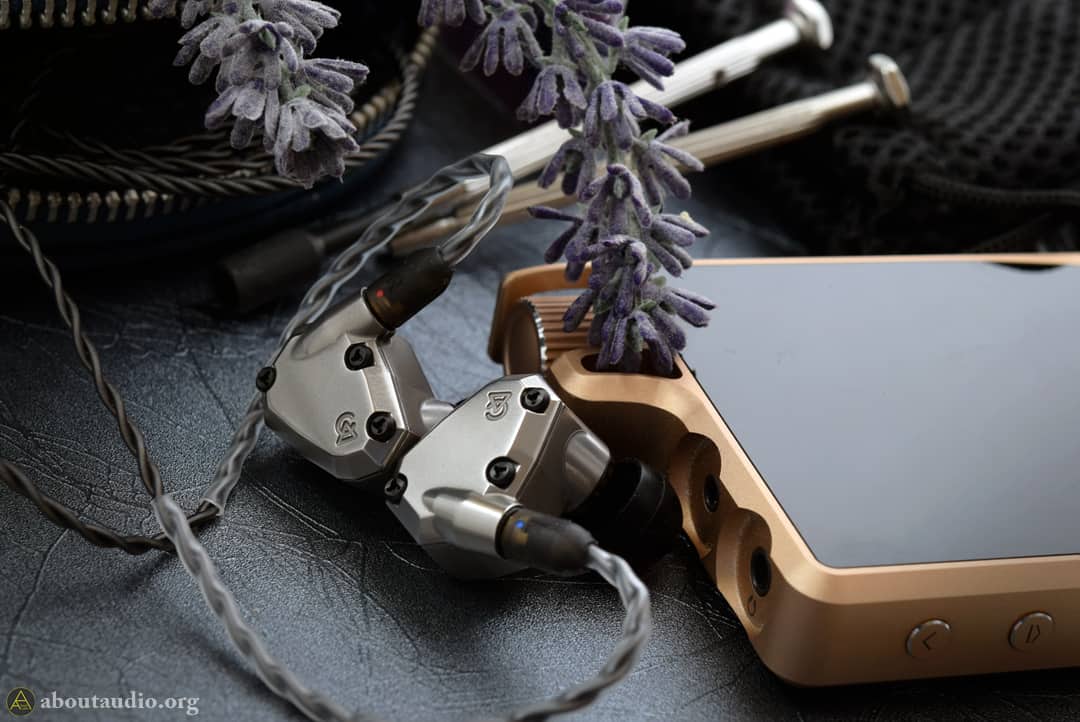 Sound impressions – Lows (Spiral dots normal)
Sound impressions – Lows (Spiral dots normal)
Ara sports a W-shaped sound signature. With having a mildly elevated quantity, lows are maintained leveled and flat. But before moving on, I would like to make sure that this does not mean that the term “flat” is not being referred to the bass quantity but the overall intensity throughout the low range. Lows show instant reaction speed with clean, mild splashes happening evenly throughout the low range. It is also thick in density that adds intimacy and stickiness to the dynamics. Despite all that, the bass quantity itself is only emphasized adequately (around 20~25% depending on different tips), having it to be similar to or minutely lesser than slightly v-shaped IEMs.
Since that, now it may come to you as a concern if you wanted a plentiful amount of bass – however, the way how Ara presents the bass is more than enough for making a strong impression as the music goes. While Ara makes a leveled bass flow as I mentioned above, lows are consistently kept bold and clear all the way down to the ultra-lows, managing to easily pull up those deep, energetic bass rumbles. The rock-solid density makes the core of the bass to be distinctively hard which is then surrounded by the tender body. This ables the strikes to be extremely tight and dense without turning stiff since the smooth body and reverbs relieves it. Since that, every note of the beat is driven by this solid core and makes the bass to show strong impressions throughout the music, even with a mild bass quantity. Of course, these rumbles do not bounce up high or get rough in order to keep the linear altitude, though lacking depth or the low-end presence have no means of worrying unless you are a basshead.
 Sound impressions – Mids
Sound impressions – Mids
Mids are forwarded made by a natural build-up from the lows. Other than the lower mids being forwarded mildly lesser, no audible dips are being made as the transition is being done and keeps the phasing perfectly coherent. A mildly husky and sensual tone is one of the strongest charms that are found from Ara. Mids also forms a well-bodied and meaty thickness. However, instead of a warm tone like most IEMs that show meaty vocals, Ara sports a cool, airy tone throughout the range. On top of that, Ara also keeps the vocal surface leveled without forming a big lump that bulges out. Hence Ara’s coolish, leveled vocal presentation breaths in gentle freshness and transparency that does not lead to fatigues even after a long listening session.
As we move upwards, vocals gradually gain more air, making them bloom with fluffiness. A metallic glimpse is noticeable as it crosses the sibilance area that serves to add rigidity to the texture. This does not escalate into spikes or warp the timbre but only gives a sleek, crusty bite at the end. Speaking of sibilance, I have noticed that eartips with slimmer bores (such as the stock Final E-Types) could cause the upper mids could get thinner or marginally sibilant once in a while, so in that case, I would recommend using wide bore eartips (Spiral Dots, AET07, etc.) since these tend to not cause any sibilance or thinning out in vocal thickness. The tight density continues on mids as well but relatively smoother than lows (which were rock solid), not leaving a hint of getting loosen or muddy in the presentation.
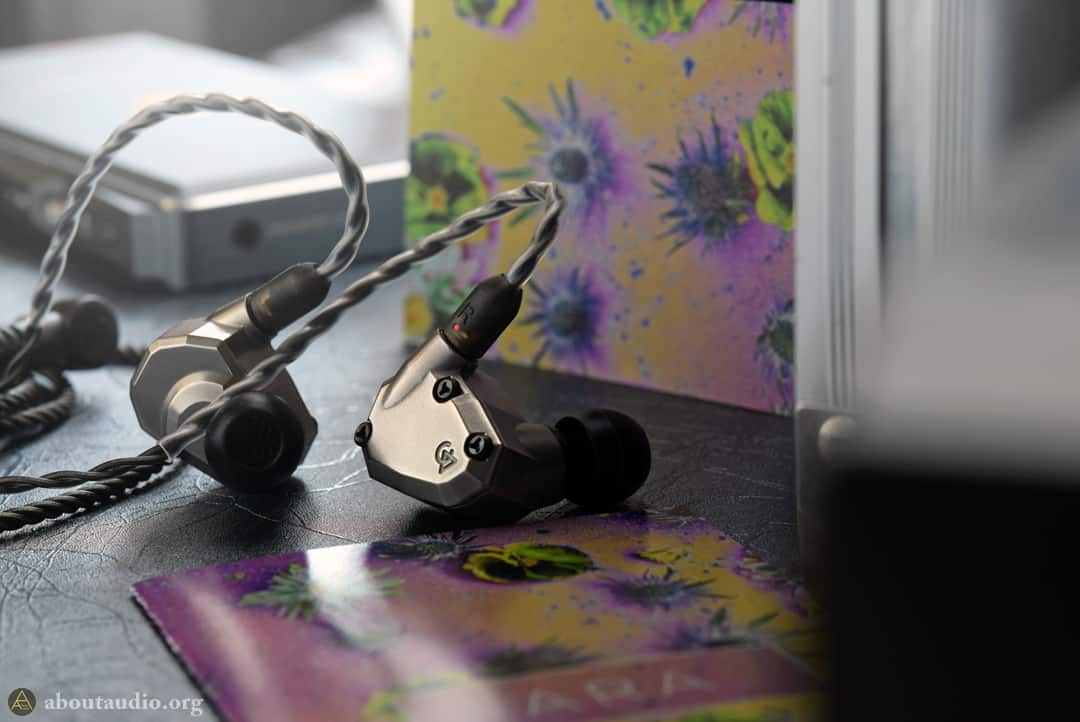 Sound impressions – Highs, etc.
Sound impressions – Highs, etc.
The crisps are very detailed with excellent layering and texture retrievals which I consider as the biggest highlight from the trebles. Ara’s analytical highs produce smooth and fine treble grains that stay apparent as the music goes which is addictively good. While highs are tight and dense like the lows did, here the notes are a lot more bouncy and elastic that makes themselves more adaptable to the flows. This also benefits how the treble strikes sound. Highs show distinctive analyticity but definitely not mechanical or cold-hearted as the impacts are being made lively and soulful.
They are distanced similar to the mids and similar in quantity. However, interestingly enough, fatigues are not a problem as they are amazingly well controlled. CA must have paid no small effort tuning the trebles as they stand out vividly without heating up or getting intense in certain parts. As Ara did with their lows, the intensity on the highs is kept very calm and evenly distributed. Ara sure does not forget on forming a large, but not overdone, headroom. While having the overall sound rush in close to the ears, it maintains an adequate distance from the ears, keeping the sound immersive without the mess. The phasing and positional details are well fetched and respect the natural atmosphere. Each instrument is distinctively separated and organized on their intended place but does not get choppy or too “mechanical”.
 Comparisons
Comparisons
-Campfire Audio Andromeda (Original)-
Simply speaking, Ara approaches to the music more in-depth and in a wider spectrum. Lows are agile and slimmer that does not fall behind in thickness or dynamics. The reverbs are further controlled which results in the overall bass quantity to slightly decreasing, yet Ara puts thorough enough attention to the body and the thickness and would not get lacking in bass response – however, the quantity may not be fully enough in the case of a basshead user since the bass quantity is about 30% elevated from flat or <10% lesser than Andromeda. The bass response from Ara is still plentiful, which that it now got even accurate, and covers the spectrum wider and clearer, ultimately achieving better performance than Andromeda.
Trebles are opened and further cleared up that the sound achieves higher transparency and airiness. Mids are cleaner and take a clear step forward, enforcing the vocal presence. They are now also more revealing and neutral in thickness meanwhile Andromeda carries a warm, thickened vocals that gently rings with reverbs. The gentle, airy splashes are now vivid and easily audible from Ara, making the transition from Andromeda to Ara to feel as if we cleared up the fog from the atmosphere.
-Campfire Audio Andromeda Gold-
As we compare Ara to Andromeda Gold, we can see that these two IEMs share the same DNA yet with distinctive differences. Lows from Andromeda Gold are more plentiful in quantity with a larger body. On the other hand, Ara’s lows maintain a well-bodied, meaty bass, they show a quicker and snappier response. The bass strikes are clearer-cut that retain a denser core in the middle. Since the strike and decay are more firmly and confidently done, the low-end atmosphere is kept cleaner and better organized.
Andro gold’s mids sound more soothing and organic while in the case of Ara, mids are clearer, brighter, and crisper. This also means that the peak around the sibilance area is relatively stronger, yet the extent is small from the get-go. Mids are thicker and moister on Andromeda Gold with that classic full and rich Andromeda vibe, while Ara is closer to neutral with less reverbs or bloatedness. The upper ends, in general, are a lot tighter/harder and blatant in exposing the surface textures. Highs are visibly clearer and transparent that poses liveliness. The fine strands of layerings are better separated and analyzed on Ara, along with carrying much more air with that open-field, breathable environment going on. Ara’s treble strikes are crispier and protruding but get nowhere near to giving fatigues. The stage size is similar – Andromeda Gold takes a lead in the lower-end fullness while Ara shows its superiority in the upper-end openness.
-Noble Audio Kaiser Katana-
Ara sounds interestingly similar to Noble Katana throughout the range. Both IEMs use a full-BA setup that sets analyticity as their characteristics that, in the end, sound beautifully musical. Both IEMs are quite blatant and revelatory to the finest level, precisely picking up every bit of detail. Yet when it comes to the bass, Ara takes the advantage. Not only Ara produces more bass quantity, but the thickness of the color and its depth is also visibly better than those from Katana – let us say Katana’s low-ends are only mildly elevated from flat while the bass quantity from Ara is equivalent to those that are slightly v-shaped. Not “V”-shaped, but “v”-shaped.
However, once we move on to the mids, Katana takes a slight lead here. Both of them are finely tuned to create coherent and well-bodied mids, yet Katana does a better job dismantling the layerings from the vocal as well as evenly and stably expanding the vocals throughout the mid-range. In other words, the vocals sound more wide-spread with lesser turbulence. It is not that Ara is unstable, of course, yet Katana still takes a slight lead when relatively spoken. Other than these, both IEMs are very similar in both characteristics and presentation as mentioned from the beginning – crisp, airy, open-field, and rich.
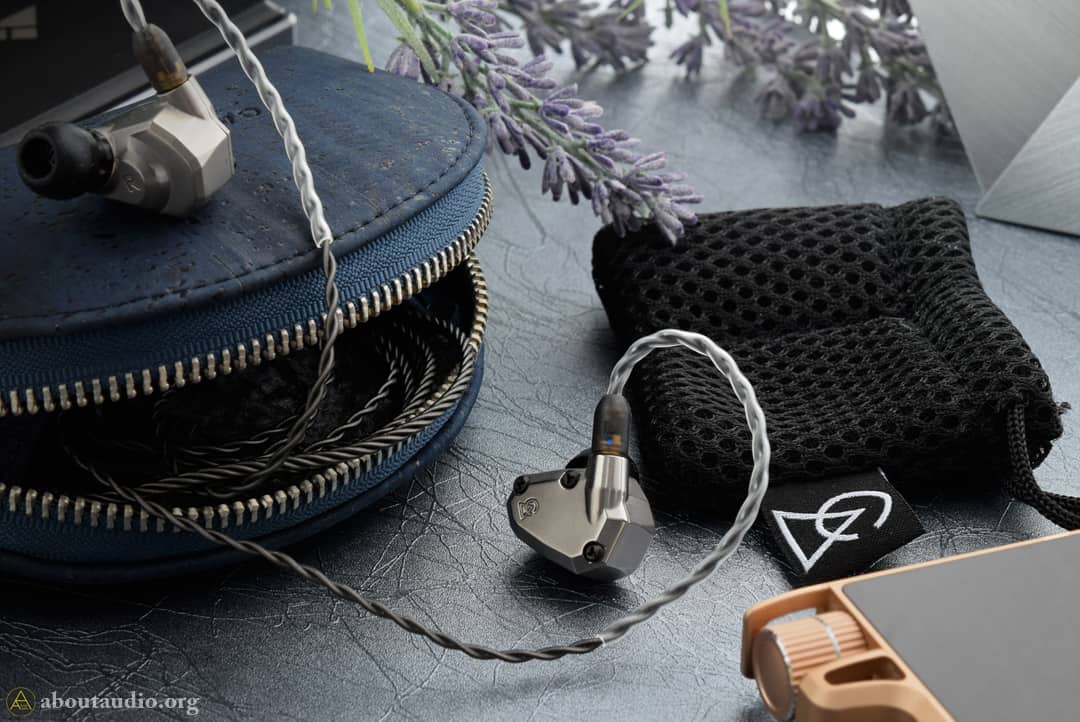 Verdicts
Verdicts
After numbers of Andromeda variations, the next generation for the full-BA lineup made itself to the shelves. As an immediate superior of Andromeda, Ara is another milestone for Campfire Audio as well as to be new the star of the show. With a further mature performance and presentation, Ara does not simply reuse the sound signature and charms from Andromeda but born to have its own attractions and style. Also, the fact that it did not fully steer away from their house sound signature makes it possible for Ara to be leading in those who appreciated the former flagship. If cleaner, deeper bass along with extra analytic and splendid upper ends are what you are looking for, Ara’s sexy sound presentation would already be enough to draw you into choosing them as your next flagship choice.
RELATED REVIEWS
Andromeda (original) / Polaris II / IO
Thanks to Campfire Audio for providing Ara in exchange for an honest
impression/feedback.
I am not affiliated to Campfire Audio and none of my words were modded or asked to be changed.


